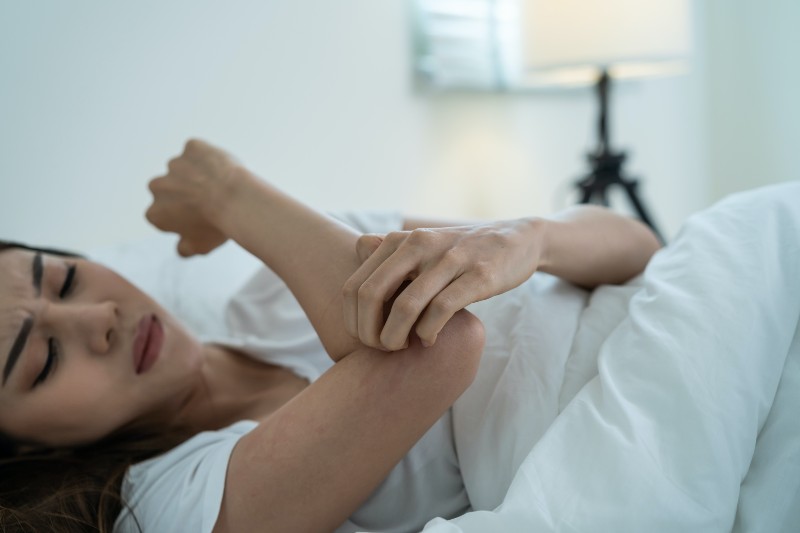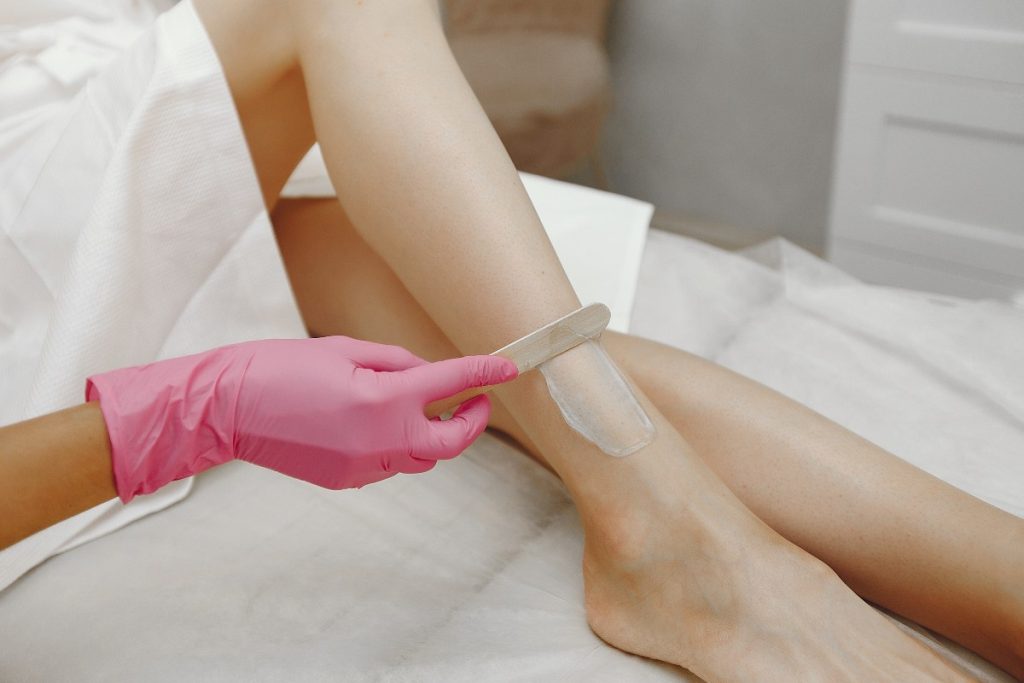It’s not easy to get rid of bed bugs in your home, because these small, elusive parasites are experts at both hiding and rapidly reproducing.
Their presence goes beyond mere nuisance, potentially causing itchy bites and allergy symptoms, not to mention the emotional distress and sleepless nights.
Homeowners are eager to banish bed bugs to reclaim their comfort and peace of mind. With dedication and step-by-step actions, you can tackle a bed bug infestation head-on.
Let’s go through the stages involved in making your home bed bug-free once again.
Step 1. Identify All Infested Areas
The battle against bed bugs begins with detective work. Early detection is key to preventing an infestation from growing. Bed bugs are tiny and great at playing hide-and-seek, so you’ll need to be thorough.
Using a flashlight, examine the bed first—check the mattress, bed frame, headboard, and bedding. Look for live insects, reddish-brown fecal spots, shed skins, and tiny white eggs.
But don’t stop there. Move on to other furniture items, including sofas and armchairs, and scrutinize their seams and folds. Inspect along baseboards, in electrical outlets, and even within personal items such as books and electronics.
Since bed bugs can hitchhike on clothing and luggage, also inspect wardrobes and any stored bags.
Mark these infested locations with something non-permanent, a piece of tape or sticky note will help you remember where to focus treatment.
Consider creating a detailed map of your home’s layout, noting the areas of concern; this will be your tactical guide to conquering the infestation. As you can understand, identifying all the infested areas is the cornerstone of effective bed bug eradication.
Step 2. Keep the Infestation From Spreading
Armed with the knowledge of where the pests are lurking, your next move is containment. To keep bed bugs from spreading to other areas of your home, start by reducing clutter.
A cluttered space offers more hiding spots for bed bugs and makes treatment more difficult. Seal any clothes, bedding, and other fabric items in plastic bags before moving them to avoid transferring bed bugs to other areas.
When you’re ready to launder them, do so on the highest setting your fabrics can handle and then dry them on the hottest cycle to kill any bugs and eggs.
Cover mattresses and pillows with specially designed encasements to trap any lingering bed bugs and prevent new ones from getting in or out. These encasements should be kept on for at least a year to ensure all bugs and eggs inside have died.
Avoid moving infested furniture out of the room before treatment; this could spread bed bugs into new areas. If you must move something, wrap and seal it in large plastic painter’s drop cloths, securing all openings with tape before transportation.
Furthermore, vacuuming can help to contain bed bugs, but it’s important to do so carefully. Use a vacuum with a bag that can be sealed immediately upon removal. After vacuuming the infested areas, immediately place the bag into a sealed plastic bag and dispose of it in an outdoor trash receptacle.
Step 3. Prepare for Treatment
Preparation is critical for the success of any bed bug eradication campaign. You’ll need to take several steps to ensure you’re ready to treat your space effectively.
Firstly, dismantle bed frames to expose additional hiding spots. Carefully inspect and vacuum furniture, as well as behind baseboards, electrical outlets, and picture frames.
Clean all your bedding, curtains, and clothes by washing them in hot water and then drying them using the highest heat setting on your dryer. For items that can’t be washed, use a high-heat setting on your dryer for 30 minutes.
Be sure to place infested items in large plastic bags when transporting to the laundry to avoid spreading bed bugs throughout your home during transit.
Non-washables, such as books and electronics, can be sealed in plastic bags with Nuvan Strips or treated with heat as long as it’s safe to do so.
In preparing your space for treatment, you’ll also want to move your furniture away from the walls to give yourself better access to all areas during the extermination process.
Seal up any cracks or crevices in floors, walls, or moldings with caulk to eliminate bed bug hiding places and prevent re-infestation after you’ve completed the treatment.
Meanwhile, have a plan for your pets. Treatments, whether chemical or heat-based, can be harmful to animals, so you may need to find a temporary home for them. Keep all of these preparations in mind as you move through the treatment process to ensure you’re thorough and effective.
Step 4. Get Rid of Bedbugs at Home
Create a Kill Chamber
To eradicate bed bugs from your belongings, set up a “kill chamber,” an environment where bed bugs cannot survive. This can be a sealed container or a bag with specific insecticides, heat, or freezing conditions.
Portable heating units are available that can heat your items to temperatures lethal to bed bugs, usually over 120°F for several hours.
Alternatively, for items that cannot be heated, you can use portable bed bug heaters that slowly bring the temperature of the chamber to at least 0°F and maintain that cold for a continuous period (usually about four days) to effectively kill any bed bugs.
When assembling your kill chamber, place smaller items into sealable bags before heating or freezing to prevent escaping bugs. Always follow the manufacturer’s instructions for any devices or products to ensure safety and effectiveness.
Document the time and method you use for each item, so you have a record to refer to, ensuring that nothing is under-treated.
Use Bed Bug Sprays
There are a variety of chemical sprays available that are designed to kill bed bugs on contact. However, chemical treatments alone typically won’t eradicate an infestation, as these sprays don’t always reach into deep crevices where bed bugs hide.
They should be used as part of an integrated pest management approach.
When using sprays, opt for those labeled for bed bug extermination, and consider those with ingredients like pyrethrins, pyrethroids, or desiccants. Always use them according to the manufacturer’s instructions, as misuse can be dangerous.
But, bed bugs are highly resilient, and some have developed resistance to certain pesticides, so it might be necessary to rotate treatments to overcome resistance.
Before spraying, remove all pets and humans from the room, and ensure good ventilation. Apply the product to all the nooks and crannies where bed bugs were identified during the inspection, but do not spray directly on your bedding or clothing.
Allow the treated areas to dry completely before coming into contact with them again.
Be mindful of the fact that bed bug sprays often have a residual effect, meaning they continue to kill bed bugs for days or weeks after application.
However, this does not mean that they can prevent new bugs from entering your home or that all the bugs and eggs in the treated area will be eliminated on the first go.
Apply Bed Bug Traps
Traps can be a useful tool in both detecting and managing bed bug infestations. There are several types of bed bug traps. Some are designed to be placed under the legs of your bed to capture bed bugs as they climb up, while others lure bed bugs with a chemical attractant.
These traps won’t solve an infestation but can be an effective part of a larger strategy by reducing the number of bed bugs that can feed on occupants and thereby slowing reproduction.
Traps also help monitor the population size and can provide an indication of whether your other eradication efforts are working over time.
When setting up bed bug traps, make sure to place them in areas where bed bugs are likely to travel to or from their hiding places to their food source – in this case, humans.
Typically, this involves placing traps around the bed’s legs, near baseboards, and alongside other furniture. Regularly check and empty these traps to assess the current level of infestation.
Spread a Residual Powder
Diatomaceous earth and silica gel are two common residual powders used to eliminate bed bugs.
These dust-like substances work by clinging to the bugs’ exoskeletons, dehydrating, and eventually killing them. It’s crucial to use food-grade diatomaceous earth to ensure it’s safe for home use.
To use, lightly dust areas where bed bugs have been found. This includes mattress seams, bed frames, within box springs, along baseboards, and in any cracks and crevices.
Use a paintbrush or a dust spreader to get an even, light layer – a little goes a long way. The powder should be left in place for several days to be most effective.
Always follow safety instructions when using diatomaceous earth or silica gel, as inhaling the powder can be harmful. After several days, vacuum up the residual powder and reapply if necessary, maintaining this process until you’re confident the bed bugs are gone.
It’s a slow method compared to others, but it is less toxic and can be a part of an integrated approach to dealing with bed bugs.
Use Heat Treatment Instead of Chemicals
Heat treatment is one of the most effective ways to eliminate bed bugs. These pests cannot survive in temperatures above 120°F for an extended period.
Professional exterminators often use specialized equipment to heat the entire room or home to a temperature that bed bugs cannot withstand. However, there are also do-it-yourself options for smaller-scale heat treatments.
For items such as clothing, bedding, and small pieces of furniture, you can use a clothes dryer on a high-heat setting for at least 30 minutes. Larger items that won’t fit in a dryer can sometimes be treated in portable heat chambers, which can be rented or purchased.
Always follow safety guidelines when conducting heat treatments, as overheating can pose a fire risk or damage sensitive items. Make sure to heat treat all potential hiding spots and rotate belongings to ensure the heat penetrates all surfaces.
Use Steam Cleaners
Steam can penetrate into fabrics and small cracks and crevices to kill bed bugs and their eggs on contact. Steam treatment is an excellent, non-toxic option for items that cannot be laundered or subjected to high heat in a dryer.
When using a steam cleaner, select a model that can reach temperatures of at least 160-180°F and has a low vapor flow so that it doesn’t push bed bugs away before killing them. Use a diffuser to ensure even distribution of the steam and move slowly over the area you’re treating.
Focus on mattresses, box springs, bed frames, headboards, and any upholstered furniture. You’ll also want to hit all the crevices of the furniture and any cracks in the walls or floors.
Remember to be thorough – you may need to do several passes to ensure that you’ve reached all the bugs. Be cautious of moisture buildup, too, as you don’t want to create a new problem of mold or mildew.
Step 5. Carefully Look for Signs of Bed Bugs After Initial Cleanup
Once your initial cleanup and treatment efforts are complete, you’ll want to be vigilant in checking for any signs that bed bugs remain in your home. This means re-inspecting all previously identified areas and potential hiding spots for signs of activity.
Look for live bugs, new fecal spots, tiny bloodstains on your bedding, and exoskeletons that bed bugs may have shed. Keep an eye out for any itchy, red bite marks on your body as well, since these can be indicative of continuing bed bug problems.
If you use bed bug traps, check them frequently to gauge whether there’s ongoing activity.
It is also wise to perform these inspections periodically over several weeks and months. Bed bugs can go long periods without feeding, and their eggs can take about ten days to hatch; so just because you don’t see signs of them immediately after treatment doesn’t mean they’re gone for good.
By keeping a diligent eye, you’ll be able to act quickly if the bed bugs resurface, helping to nip any new infestation in the bud before it grows.
Step 6. Evaluate and Prevent Future Bedbugs
Once you’ve gotten rid of bed bugs, it’s important to take measures to prevent a re-infestation. Start by sealing off entry points such as cracks in the walls and spaces around pipes and cables. Reduce clutter in your home to decrease the number of places bed bugs can hide.
Also, be cautious when bringing in second-hand furniture, luggage, or clothing, as these are common ways bed bugs find their way into homes. Inspect any such items thoroughly before allowing them into your living space.
It’s also a good practice to use protective covers on your mattresses and box springs. These encasements are designed to be bed bug-proof and can prevent any bed bugs from infesting these areas or trap any remaining bugs inside until they die.
Regular cleaning, including vacuuming your floors and furniture, can help detect and remove any stray bugs or eggs.
Changing your bedding regularly and inspecting the linens for signs of bed bugs can also be an effective preventative measure.
Lastly, consider regular inspections in your home, either by yourself or with the help of a professional, to ensure that these pests do not make a comeback.
Step 7. Get the Pest Control Pros Involved
If the bed bug infestation in your home is large or persists after you have taken all the DIY steps outlined, it may be time to call in the professionals.
Pest control specialists have access to a range of powerful tools and knowledge that can be highly effective against bed bugs.
Professional exterminators can offer comprehensive solutions, such as whole-room heat treatments and more sophisticated chemical treatments that are not available over the counter.
They come equipped with the expertise to ensure these methods are used safely and effectively, minimizing the risk to your family and pets.
When selecting a pest control professional, look for licensed and experienced providers who specialize in bed bug extermination. They should be able to provide a clear plan of action and explain the techniques and treatments they will use.
Ask about follow-up visits as well, as these are often necessary to ensure the complete eradication of bed bugs.
Conclusion
The journey to get rid of bed bugs can be challenging, but with patience, determination, and a well-executed plan, it is entirely possible to reclaim your home from these unwelcome invaders.
Start by identifying infested areas, contain the spread, prepare for treatment with meticulous cleaning, and apply a combination of treatments suited to your situation.
Remain vigilant post-treatment, maintain preventive measures to avoid a new infestation, and don’t hesitate to call in professionals if the situation is beyond your control.
With these strategies, hope you can say goodbye to bed bugs and enjoy a peaceful and pest-free living space again.





